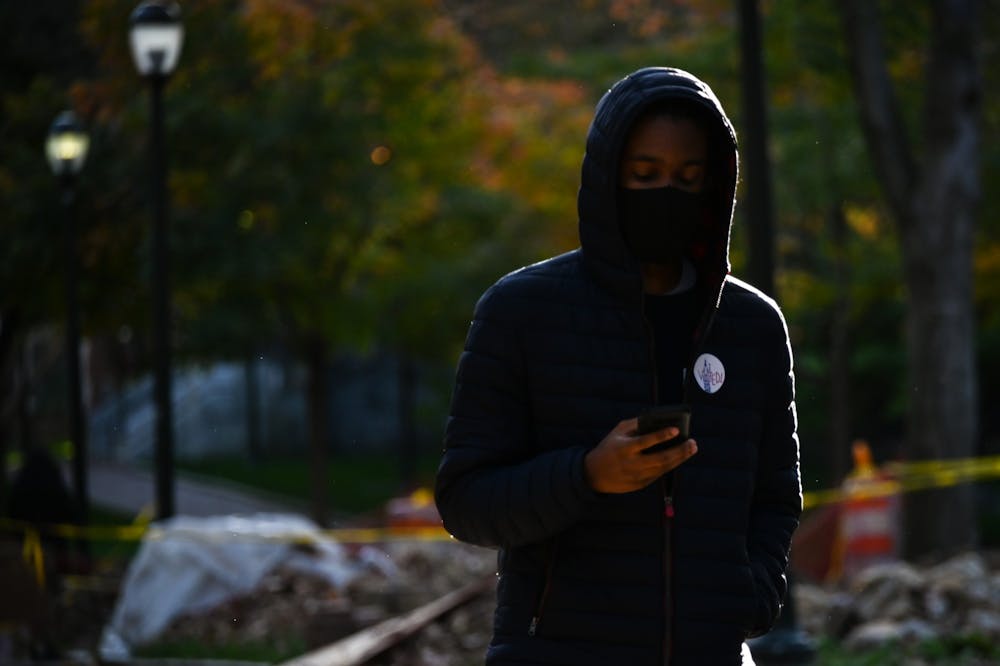The Andrea Mitchell Center for the Study of Democracy hosted a virtual panel discussion last week exploring the history of voter suppression and how it may occur in 2020.
The event, titled “Voter Suppression, Past and Present,” featured three panelists on Wednesday including Gideon Cohn-Postar, a postdoctoral fellow at the Andrea Mitchell Center; Mara Suttmann-Lea, a government and international relations assistant professor at Connecticut College; and Kurt Sampsel, senior project manager of the Center for Tech and Civic Life, a nonprofit that connects people with election information to promote civic engagement.
Moderated by Penn History professor Sophia Rosenfeld, the panelists tackled three different topics: How voter suppression was implemented historically, how it is still affecting the world today, and how it can be combated as election day approaches.
Cohn-Postar began by explaining how political parties have historically pursued voter suppression as a strategy when they decided they couldn’t win an election with the majority of eligible voters. Many of these tactics sought to control access to polling, like enacting sunset laws, which limited poll operating hours to prevent working men from voting in the 1880s, while tactics like poll watching have been used to intimidate and dissuade voters.
Poll watching has taken the spotlight as a potential voter suppression tactic in 2020, as President Donald Trump has encouraged his supporters to observe polling places. Trump claimed in the first presidential debate that legitimate poll watchers were being turned away in Philadelphia, asserting that "bad things happen in Philadelphia." But the people from the Trump campaign who were turned away attempted to enter a satellite election office, which state law prohibits.
The majority of Cohn-Postar's research focuses on the Gilded Age, or the late 19th century. He described how voter suppression tactics from this period have had a long-lasting influence into the present day.
"The tactics have changed, the party labels have changed," Cohn-Postar said. "But what's remained the same is that parties and candidates that do not believe they can win a majority of votes can and do seek to prevent voters from casting their ballots."
Suttmann-Lea focused on modern voter suppression tactics, particularly the unequal access to elections in minority communities. According to her research, racial and ethnic minorities often face many unnecessary barriers to voting, including difficulty receiving political information, facing longer poll lines, working with less trained poll workers, and being more likely to be asked for identification when none is needed or required. The compounding of these obstacles can affect the likelihood of voters participating in future elections, she said.
RELATED:
Biden campaign donors eclipse Trump campaign contributors in Philadelphia
Pennsylvania Supreme Court rules ballots can’t be tossed over mismatched signatures
"Any barrier to voting is problematic. But it's particularly problematic when we're looking at these barriers that are not being borne equitably across all voters," Suttmann-Lea said.
Sampsel described how the Center for Tech and Civic Life has been working to make the 2020 election more secure and accessible. One issue that it has concentrated on is controlling the spread of misinformation, either from foreign interference or domestic organizations. In collaboration with the Center for Democracy and Technology, CTCL has created a 90-minute webinar-styled course to help election departments better recognize misinformation, Sampsel said.
CTCL's checklist for combating election misinformation provides actionable steps that election officials can take to tackle influence operations, including working with fact-checking organizations and frequently publishing accurate information about voting processes. Sampsel concluded the panel by encouraging individuals to be more aware of how they can unintentionally contribute to spreading false narratives.
“Discouraging participation by spreading myths about voting is not just something a Russian troll farm does, or your kooky uncle does on Facebook, it’s also something that ordinary people do, smart people can fall into across the political spectrum, even unintentionally,” Sampsel said.









